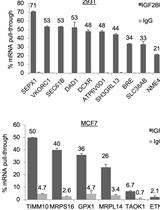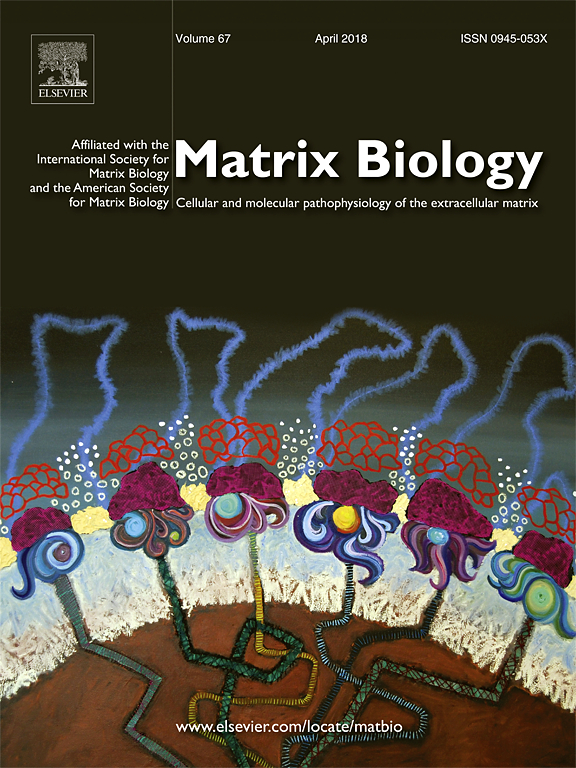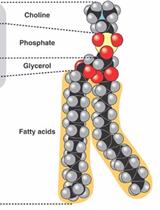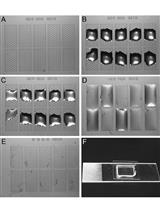- EN - English
- CN - 中文
Hyaluronan Isolation from Mouse Mammary Gland
小鼠乳腺中透明质酸的分离
发布: 2018年06月05日第8卷第11期 DOI: 10.21769/BioProtoc.2865 浏览次数: 5933
评审: Vivien Jane Coulson-Thomastarsis ferreiraAnonymous reviewer(s)

相关实验方案

用于鉴定核糖核蛋白复合物中 mRNA 种类的增强型核糖核蛋白免疫沉淀 (RIP) 技术
Saja A. Fakhraldeen [...] Caroline M. Alexander
2022年10月05日 2631 阅读
Abstract
The glycosaminoglycan hyaluronan (HA) is a key component of the extracellular matrix. The molecular weight of HA is heterogeneous and can reach from several million to several hundred daltons. The effect of HA on cell behavior is size dependent; fragmented HA acts as a danger signal, stimulates cell migration and proliferation and is proinflammatory, native high molecular weight HA suppresses inflammation. Therefore, it is important to analyze HA size distribution when studying the role of HA in tissue homeostasis and pathology. This protocol describes isolation of HA from mouse mammary glands but can also be applied to other tissues. The quality of the isolated HA is sufficient to analyze size distribution by gel electrophoresis (Calabro et al., 2000).
Keywords: Hyaluronan (透明质酸)Background
The glycosaminoglycan HA consists of N-acetyl glucosamine and beta glucuronic acid disaccharides and is a ubiquitous component of the extracellular matrix. High molecular weight HA is fragmented by enzymatic degradation and oxidation by reactive oxygen and nitrogen species. In healthy tissues, the majority of HA is of high molecular weight. Accumulation of fragmented HA acts as danger signal during pathological processes (Tolg et al., 2012 and 2017; Yuan et al., 2015). For example, HA fragments stimulate inflammation whereas high molecular weight HA suppresses inflammation. HA influences cell behavior such as cell migration and proliferation by interaction with cell membrane receptors, leading to activation of signaling pathways. Since receptor-HA interactions are influenced by HA size, the effect of HA on tissue biology depends not only on HA amount but rather on HA size distribution and HA receptor expression by individual cells.
Materials and Reagents
- Pipette tips (Fisher Scientific, catalog numbers: 02-707-417 , 02-707-408 , 02-707-438 )
- 1.5 ml Eppendorf microcentrifuge tubes (Diamed Advan Tech, catalog number: AD150-N )
- Slide-A-Lyzer® MINI Dialysis Devices 7K MWCO, 0.1 ml (Thermo Fisher Scientific, catalog number: 69560 )
- Slide-A-Lyzer® MINI Dialysis Devices 3.5K MWCO, 0.5 ml/2 ml (Thermo Fisher Scientific, catalog number: 88400 / 88403 )
- Pierce Strong Anion Exchange Spin Column, Mini (Thermo Fisher Scientific, catalog number: 90010 )
- C57Bl/6 female mice
- Sterile de-ionized water
- NaOH (BioShop, catalog number: SHY700.500 )
- Tris base (121.1 g/mole) (BioShop, catalog number: TRS001.1 )
- NaCl (58.44 g/mole) (BioShop, catalog number: SOD001.10 )
- SDS (BioShop, catalog number: SDS001 )
- CaCl2·2H2O (147.0 g/mole) (Sigma-Aldrich, catalog number: C3306 )
- PBS (WISENT, catalog number: 311-425-CL )
- Proteinase K (Roche Diagnostics, catalog number: 03115879001 ), recombinant, PCR grade
Note: It is approximately 2.5 U/mg when assayed with the Chromozym assay, or 30 U/mg with the hemoglobin assay. - Chloroform (reagent grade, Acros Organics, catalog number: 423555000 )
- Ethanol (EtOH), 100%
- Deferoxamine mesylate salt (=deferoxamine methanesulfonate salt) (657 g/mole) (Sigma Aldrich, catalog number: 1166003 )
- Benzonase (Sigma-Aldrich, catalog number: E1014 ) recombinant 250 U/μl
- 0.2 M NaOH (see Recipes)
- 1 M Tris pH 8.3 (see Recipes)
- 5 M NaCl (see Recipes)
- 10% SDS (see Recipes)
- 1 M CaCl2 (see Recipes)
- Proteinase K solution, 20 mg/ml (see Recipes)
- Deferoxamine mesylate solution, 50 mg/ml (see Recipes)
- Tissue lysis buffer (see Recipes)
- 0.1 M NaCl (see Recipes)
- Benzonase digestion buffer (see Recipes)
- NaCl solutions for ion exchange (IEX) fractionation (see Recipes)
Equipment
- Pipettor (Drummond Scientific, Pipet-Aid®, model: XP2 )
- Pipetman (Gilson, model: PIPETMAN® Classic )
- Incubator capable to hold 37 °C (VWR, model: 1510 E )
- Eppendorf Thermomixer (Eppendorf, model: ThermoMixer® R )
- Refrigerated tabletop microcentrifuge capable of 18,000 x g (Thermo Fisher Scientific, model: SorvallTM LegendTM Micro 21R )
- Rotor included with SorvallTM LegendTM Micro 21R
- Flammable materials storage freezer, -20 °C
- Fisher Scientific stirring Hotplate
- Biohazard/Laminar flow hood
- Digital Analytical Balance Scale (U.S. Solid Store, model: USS-DBS5 ); Repeatability: ± 0.2 mg
- Balance scale (Denver Instrument, model: XS-310 D , Repeatability ± 0.02 g
- pH meter (Fisher Scientific, model: accumetTM AR15 )
- Fluorophore-assisted carbohydrate electrophoresis (FACE)
Procedure
文章信息
版权信息
© 2018 The Authors; exclusive licensee Bio-protocol LLC.
如何引用
Tolg, C., Cowman, M. and Turley, E. A. (2018). Hyaluronan Isolation from Mouse Mammary Gland. Bio-protocol 8(11): e2865. DOI: 10.21769/BioProtoc.2865.
分类
癌症生物学 > 通用技术 > 生物化学试验 > 其它化合物
发育生物学 > 形态建成 > 器官形成
细胞生物学 > 组织分析 > 生理学
您对这篇实验方法有问题吗?
在此处发布您的问题,我们将邀请本文作者来回答。同时,我们会将您的问题发布到Bio-protocol Exchange,以便寻求社区成员的帮助。
提问指南
+ 问题描述
写下详细的问题描述,包括所有有助于他人回答您问题的信息(例如实验过程、条件和相关图像等)。
Share
Bluesky
X
Copy link










